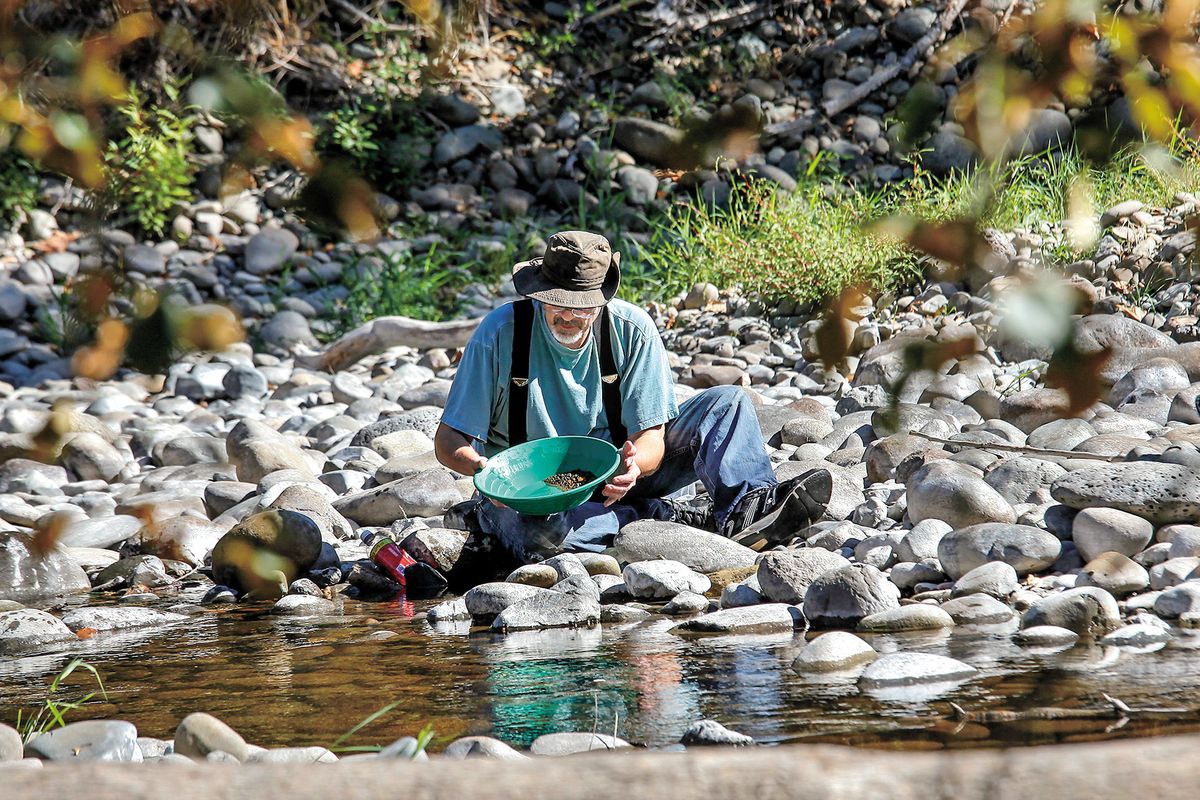Area prospectors are finding gold hidden in local waters

BATTLE GROUND, Wash. – There’s gold in them thar hills of Southwest Washington. And in our rivers and on our beaches, too. You just have to know how and where to look for it.
Several times a month, members of the Southwest Washington Gold Prospectors club pack up their pans, sluices and shovels and go on field trips. More experienced members work claims on their own, too.
“There’s a little bit of gold all over. You’d be amazed,” said Randy Harper, president of the prospecting club. “But there’s a lot of work in it,” added Harper, who lives in Camas. “It’s not easy finding gold.”
On a recent weekend, members of the Vancouver-based club gathered at Daybreak Park on the East Fork of the Lewis River. By this time of year, the water is running so low – only a few feet deep – that plenty of riverbank underwater during other times of the year is easily accessible.
After decades of prospecting, Harper can read a river for gold like an angler can scan for fish. He explained that because gold is a relatively heavy element, it tends to get washed up on the shores where streams bend. He led the prospectors to a dried-up curving river channel.
One of the appeals of gold panning is that basic techniques haven’t changed in hundreds – if not thousands – of years, so only simple gear is needed.
Club member Patrick Vercoe of Portland sat down with a small shovel he bought at a garden store and started digging up rocks and dirt. Vercoe put the debris into a plastic sieve and washed the dirt off the rocks, down into a plastic bucket. Harper then scooped the dirt in a prospector’s pan, carried it over to the flowing stream and started swishing water around the muck. Though traditional gold pans have smooth sides, plastic pans with circular ridges on the sides do a better job of catching gold, he said.
Harper peered intently for bits of gold, ignoring the glistening bits of magnetite that might fool a beginner.
“Most of the gold in the river is little, tiny gold,” Harper said. “I try to get it out in the sun because it’ll sparkle.
“Half a cornflake is like ‘Eureka!’” Harper said. “Guys holler.” Depending on its shape, such a flake could be worth several hundred dollars.
“Keep your eye out for diamonds, too,” Harper called out. Believe it or not, low-grade diamonds are sometimes found. On this outing, Harper didn’t spot any diamonds. He did spot a tiny flake of gold, barely discernible to the untrained eye. “We always find a little bit,” he said.